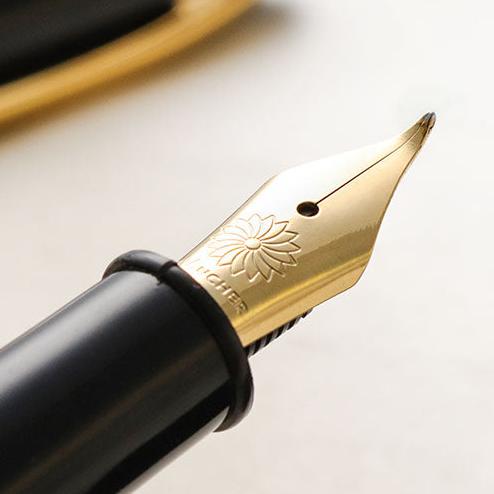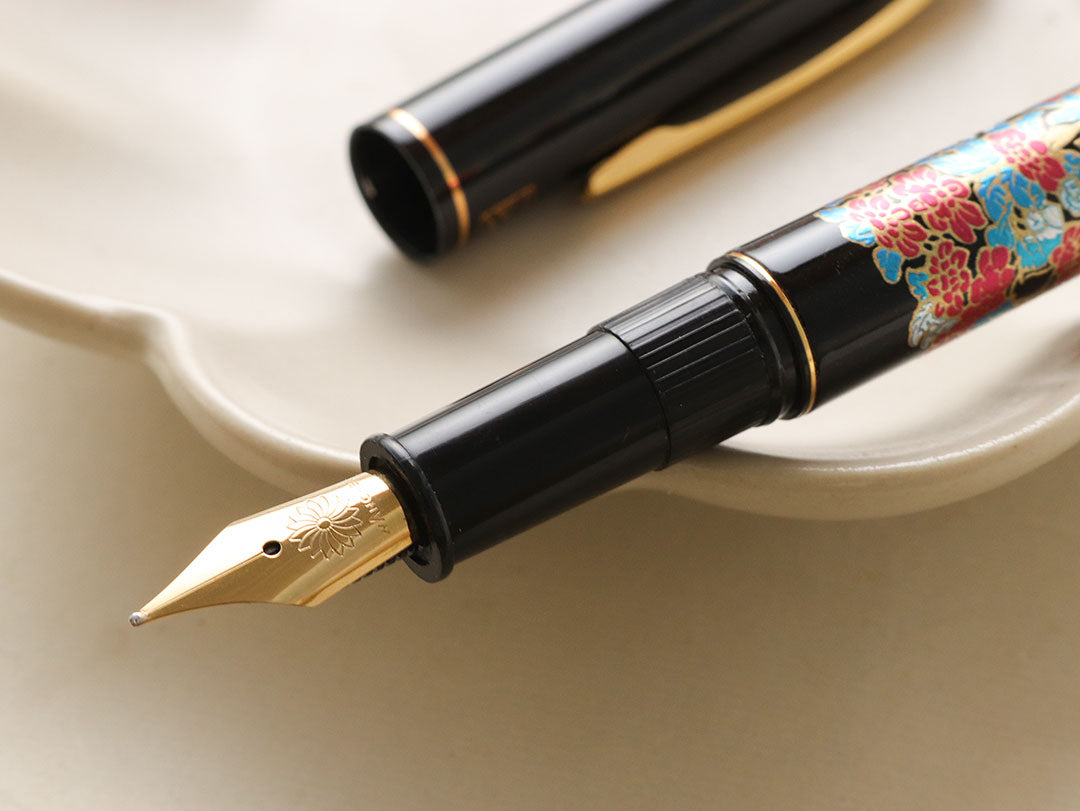Kuretake Kindai Maki-e - Shunshoku Banri
Kuretake Kindai Maki-e - Shunshoku Banri
Couldn't load pickup availability
Description
Description
Shunshoku Banri
The motif originates from a cloth traditionally used for placing offerings in front of altar, discovered in the southern section of the Shosoin repository. This design features a lotus-like floral seat intricately arranged within a fully blooming floral tree. The vivid color scheme and the artist's exceptional skill from that era are beautifully captured through the exquisite Kindai Maki-e technique.
Wancher x Kuretake
Together with Kuretake, we are determined to bring you the artwork of Kindai Maki-e in 18 designs that represents Japanese symbols, culture, and folklore.
To complete the fine artwork of artisans from Kuretake, we attach the nibs and clip as part of expressing our passion and stories in these fountain pens. With the utmost sincerity, we present you the traditional Japanese design and technology of the Maki-e Monogatari fountain pen for your own use or as a gift for someone else.
Kindai Maki-e and Ukiyo-e
Technique Inspiration
Ukiyo-e is a traditional Japanese painting style that is published using silkscreen printing techniques, similar to Kindai Maki-e. Ukiyo-e involves ink-printing through stencils onto media such as woodblock and paper screens. The art of adhering the picture, to the surface is what makes Kindai Maki-e and Ukiyo-e are comparable. In 1860, this Japanese printmaking technique actually influenced the world-renowned impressionist painter, Van Gogh.
Pen Design
The design is inspired in part by the Japanese 17th century painting style known as Rimpa, which has influenced many artwork to date. It incorporates natural elements such as flowers, trees, mountains, and animals, which are also common in Japanese traditional paintings.
The Monogatari Fountain Pen
The Making Process
The pen has a surprisingly thin and light body without compromising its durability. With a jointless body, the charm of Maki-e drawings is fully extended. To make the shape of the body, the craftsmen have to utilize a single aluminum sheet to forge it downward until it reaches the shape of a pen. To achieve a light but long-lasting pen, such painstaking technique necessitates both delicacy and strength.
The body and cap are made by squeezing the metal during the molding process, which requires arduous labor. As for the body, the beauty of modern Maki-e is reflected in its own story to tell.
Shape
The bullet-shaped Maki-e fountain pen, smooth and moderately sized, is compact, will fit comfortably in your hand, and is perfect for daily use. The nib size is available in Fine and Medium, also compatible with Kuretake's fountain pen nibs.
Specifications
Material: Aluminum
Method: Press drawing molding
Making technique: Kindai maki-e
Pen Size: diameter 11 x 137 mm
Ink-filling system: Eyedrop method, Cartridge, and Converter (European size)
Country of Origin: Japan
Nib Material: Stainless steel iridium point
Nib size: F, M
Country of Origin: Taiwan
*All parts are assembled in Japan
Packaging
Wooden box, Cartridge, Converter
Share













